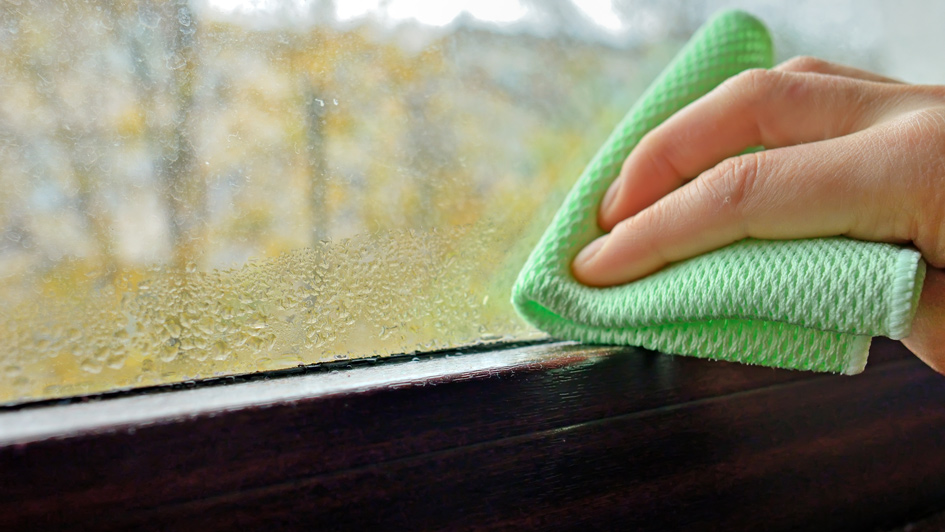
The windows of your home are a gateway to the outdoors, a way to draw light in when you appreciate the view of your garden, yard or scenery. The last thing you need to see is a sweaty window coated in a coating of condensation.
Not only are windows coated in condensation unattractive, they also can be evidence of a larger air-quality problem within your home. Luckily, there’s multiple things you can try to resolve the problem.
What Creates Condensation on Windows
Condensation on the inside of windows is produced by the damp warm air inside your home reaching the colder surface of the windows. It’s particularly common in the winter when it’s much chillier outside than it is within your home.
Inside Moisture vs. In Between Panes
When talking about condensation, it’s necessary to know the contrast between moisture on the inside of your windows versus moisture in between the windowpanes. One is an indoor air quality issue and the other is a window issue.
- Moisture on the inside of a window is caused from the warm moist air inside your home forming along the glass.
- Existing moisture you find between windowpanes is formed when the window seal breaks down and moisture slips between the two panes of glass, in which case the window should be repaired or replaced.
- Condensation in the windows isn’t a window situation and can instead be resolved by fine-tuning the humidity across your home. Numerous things produce humidity in a home, like showers, cooking, taking a bath or even breathing.
Why Indoor Sweating on Windows Can Be Trouble
Although you might consider condensation inside your windows is a cosmetic problem, it could also be indicating your home has high humidity. If this is the case, water could also be accumulating on window frames, cold walls or other surfaces. Even a slim film of water can encourage wood surfaces to mildew or rot over time, promoting the growth of mildew or mold.
How to Lower Humidity Throughout Your Home
The good news is there are various options for eliminating moisture from the air throughout your home.
If you have a humidifier running within your home – whether it be a small unit or a whole-house humidifier – lower it further so the humidity inside your home goes down.
If you don’t have a humidifier going and your home’s humidity level is higher than you prefer, consider purchasing a dehumidifier. While humidifiers introduces moisture into your home so the air doesn’t get too dry, a dehumidifier extracts excess moisture out of the air.
Smaller, portable dehumidifiers can remove the water from one room. However, these units require emptying out water trays and most often service a small area. A whole-house dehumidifier will eliminate moisture across your entire home.
Whole-house dehumidifier systems are managed by a humidistat, which allows you to establish a humidity level the same like you would select a temperature with your thermostat. The unit will begin running immediately when the humidity level surpasses the set level. These systems work with your home’s HVAC system, so you will want to contact qualified professionals for whole-house dehumidifier installation Chatsworth.
Other Ways to Reduce Condensation on Windows
- Exhaust fans. Installing exhaust fans in humidity hotspots such as the bathroom, laundry room or above the kitchen range can help by extracting the warm, moist air from these rooms out of your home before it can increase the humidity level across your home.
- Ceiling fans. Turning on ceiling fans can also keep air flowing inside the home so humid air doesn’t get caught up in one area.
- Opening your window treatments. Opening the blinds or drapes can reduce condensation by stopping the humid air from being trapped against the windowpane.
By reducing humidity across your home and moving air throughout your home, you can make the most of clear, moisture-free windows even in the winter.
